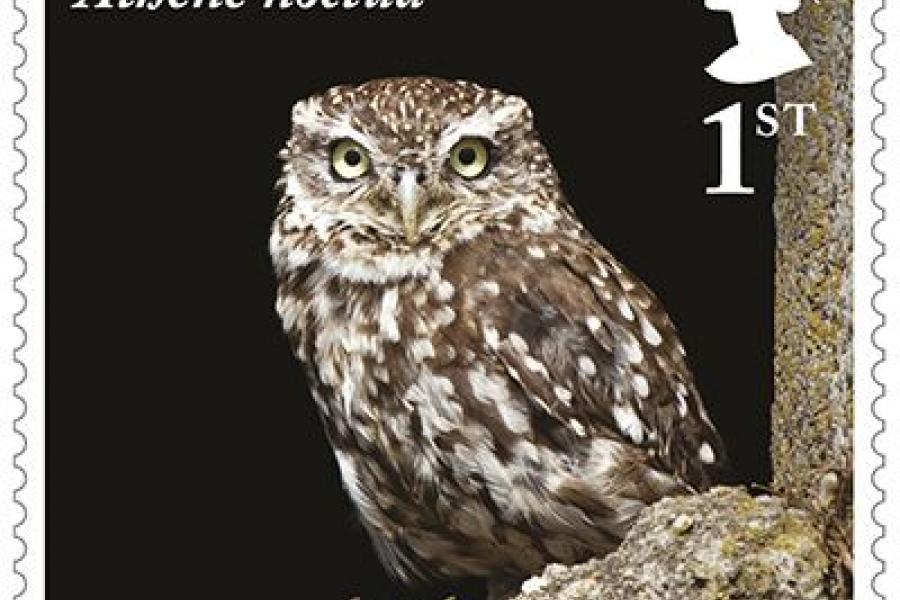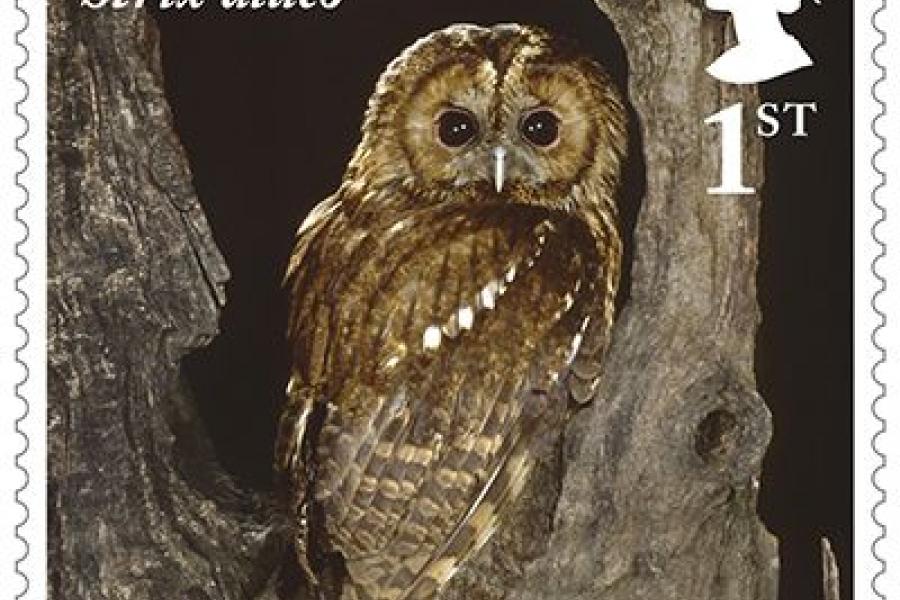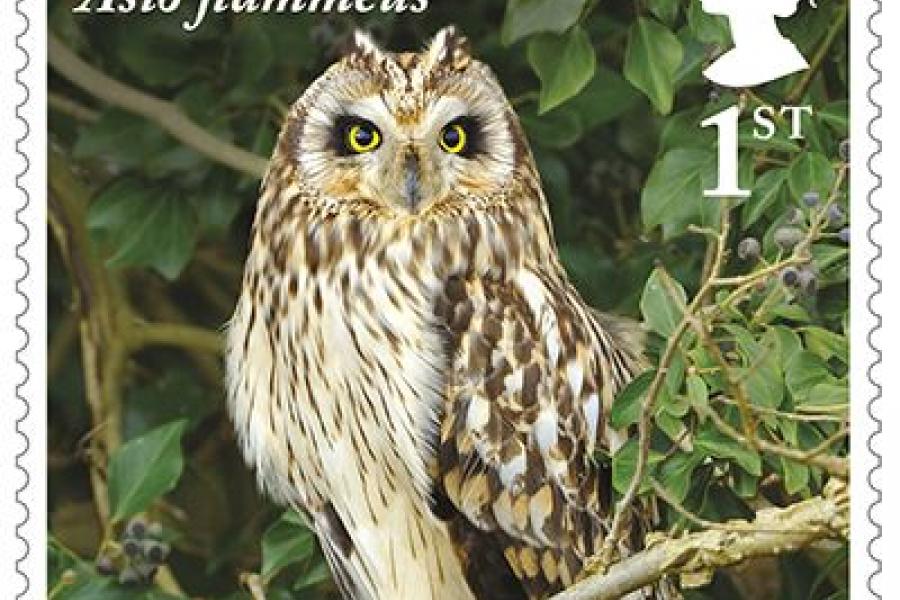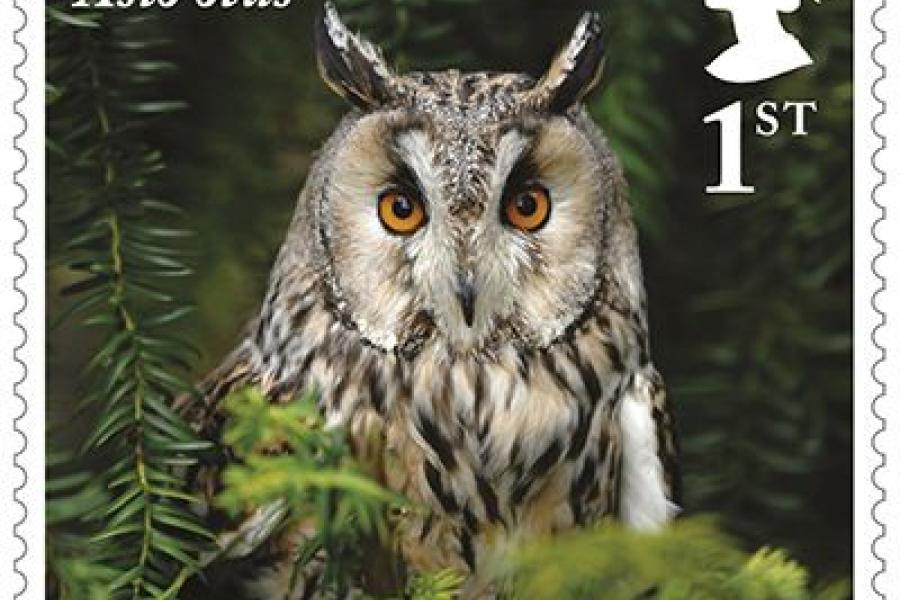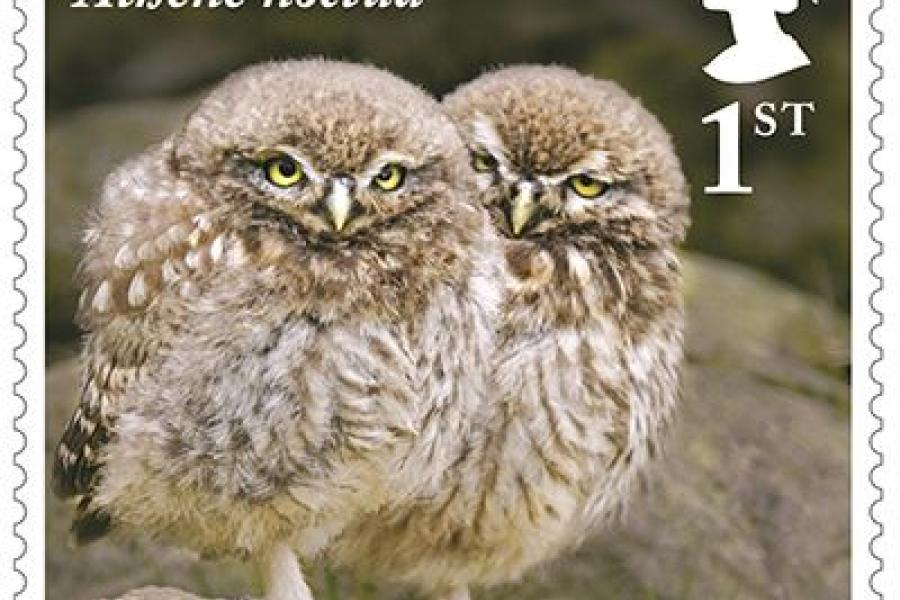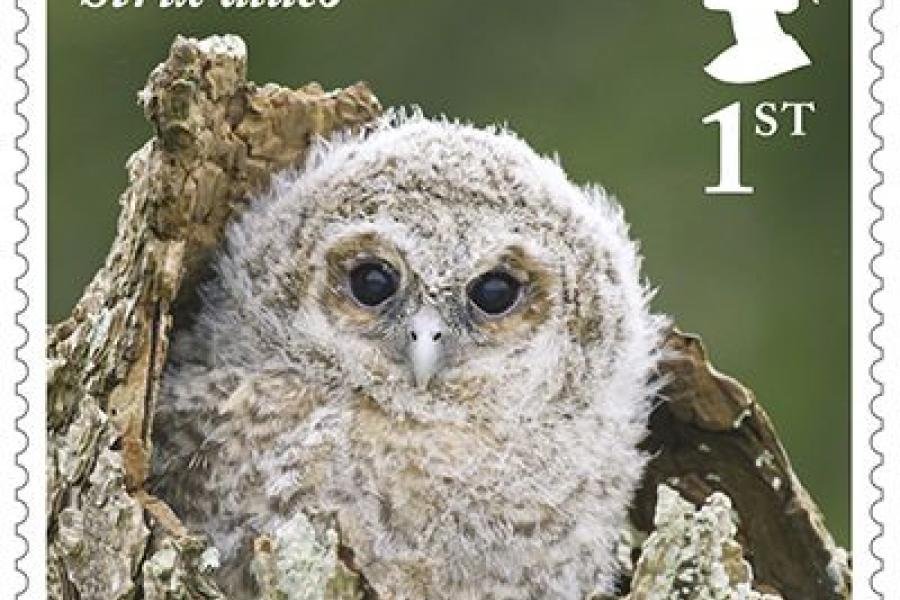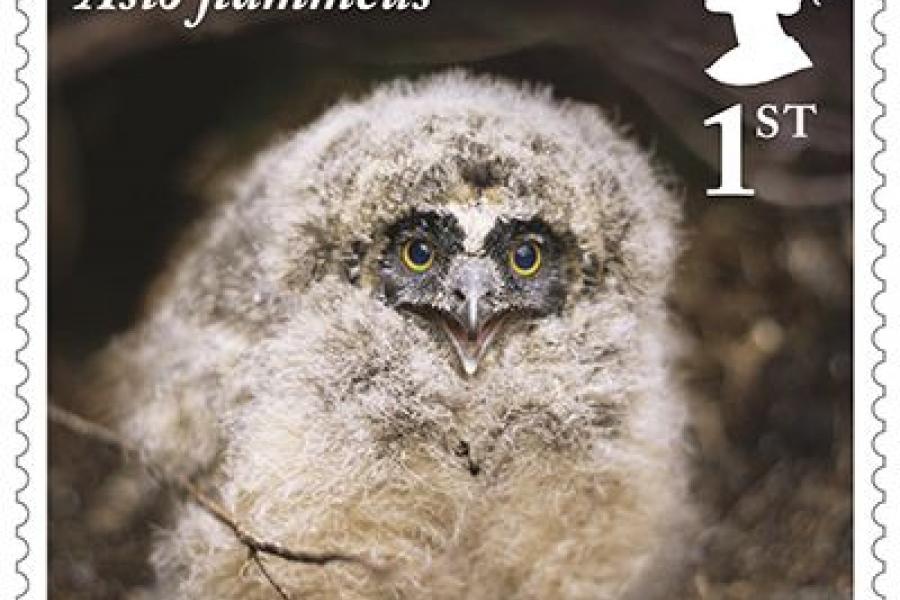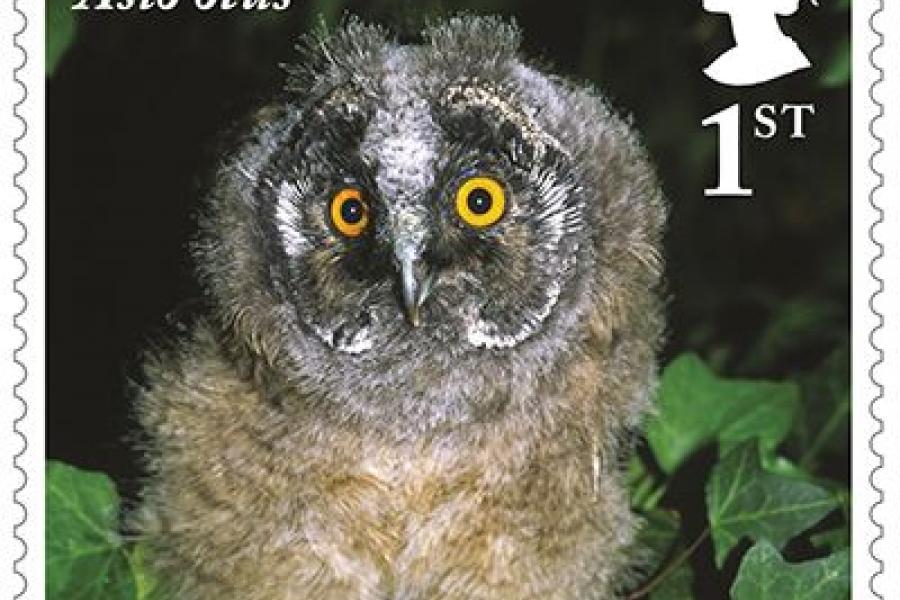Owls
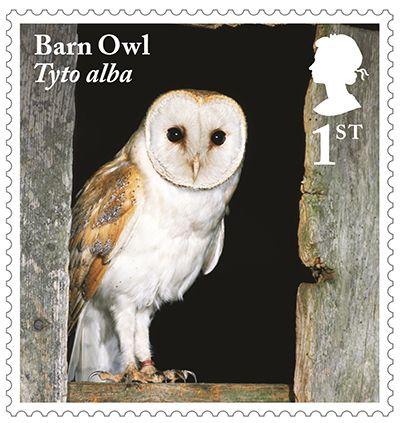
Royal Mail’s upcoming stamp issue, released on May 11, is devoted to Owls.
It features the five species of owl which live and breed regularly in Britain, by way of one se-tenant strip of five illustrating adults and another showing juveniles.
Usually hunting for small mammals at night, owls are among the most successful predators in the bird world, thanks to eyesight which excels in low-light conditions, acute hearing and the ability to fly almost silently.
Although rarely seen, they are widespread in areas of woodland or open countryside, and largely sedentary rather than migratory, so they keep to the same territory all year round.
Designed by Atelier Works, after photographs, the stamps are printed in litho by International Security Printers.
1st class Barn Owl (adult)
Unmistakeable with its white and gold plumage and heart-shaped face, the barn owl, Tyto alba, is mostly nocturnal but might sometimes be seen on summer evenings. It hunts in flight over open country, and gets its name from its tendency to nest in farm buildings.
1st class Little Owl (adult)
Introduced into England in the 19th century, the little owl, Athene noctua, has a less rounded face than the other species and lives in woodland with open grassy areas nearby. It hunts mostly insects, swooping down on them from a perch or chasing them on the ground.
1st class Tawny Owl (adult)
The tawny owl, Strix aluco, is Britain’s largest and most common owl, but is rarely seen because it is strictly nocturnal. A powerful predator, often swooping on prey from a favourite watch point, it is even known to eat smaller owls.
1st class Short-Eared Owl (adult)
Named after its tiny ‘ear’ tufts, the short-eared owl, Asio flammeus, differs from other species in being diurnal, hunting in daylight by flying close to the ground and dropping feet-first on its prey. It is also nomadic, breeding mainly on open moorland but becoming more widespread in winter.
1st class Long-Eared Owl (adult)
Easily distinguished from other species by its large ‘ear’ tufts, the long-eared owl, Asio otus, breeds mostly in pine forests but likes to hunt in open countryside, on the wing or from a perch. It disperses in winter and may be found in roosts comprising ten or more birds.
1st class Barn Owl (juvenile)
Barn owlets are typically reared, in a clutch of about four, in a cavity in an old building.
1st class Little Owl (juvenile)
Little owlets leave the nest about seven weeks after they hatch, although they cannot fly until several weeks later.
1st class Tawny Owl (juvenile)
Tawny owlets leave the nest long before they can fly, climbing to safe spots in trees while their parents continue to bring them food.
1st class Short-Eared Owl (juvenile)
Short-eared owlets are reared in nests on the ground, hidden amongst moorland heather or reed.
1st class Long-Eared Owl (juvenile)
Often reared in an old nest made by another bird, long-eared owlets beg for food with a distinctive call which sounds like a squeaky gate.
OTHER PRODUCTS
The presentation pack studies the typical characteristics of owls in general, such as their hearing, eyesight, plumage and distinctive calls.
PRICES
Set of 10 stamps £6.70
Presentation pack £7.20
Stamp cards £4.50
First day cover £8.46
VERDICT
COMMEMORATIVE WORTH 1/5
There is no particular rationale for this set beyond meeting a popular theme
QUALITY OF DESIGN 2/5
The stamps are based purely on photographs, but high-quality ones with the feel of portraiture
WOW FACTOR 3/5
The images are bold and eye-catching, and the owlets are especially cute!

